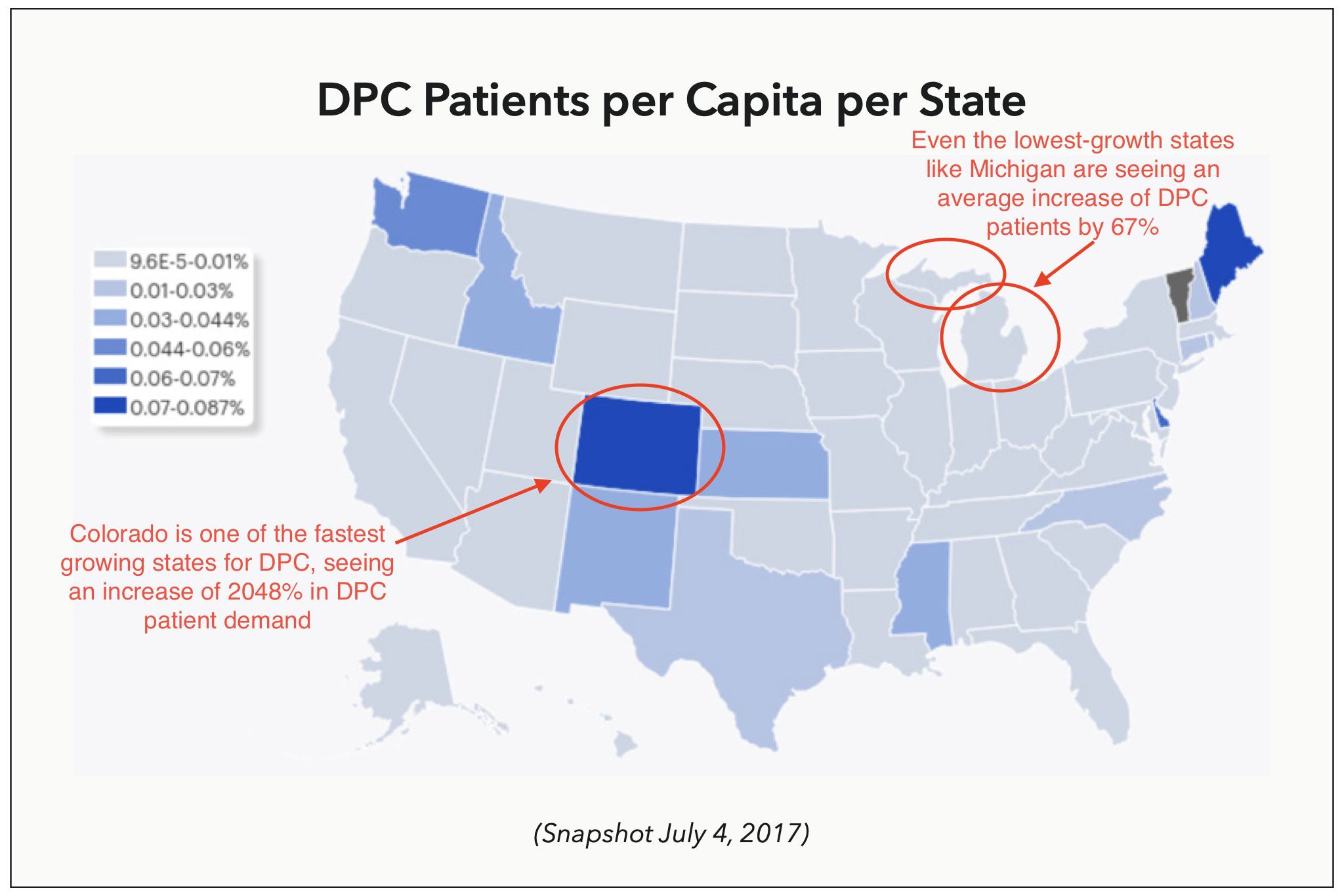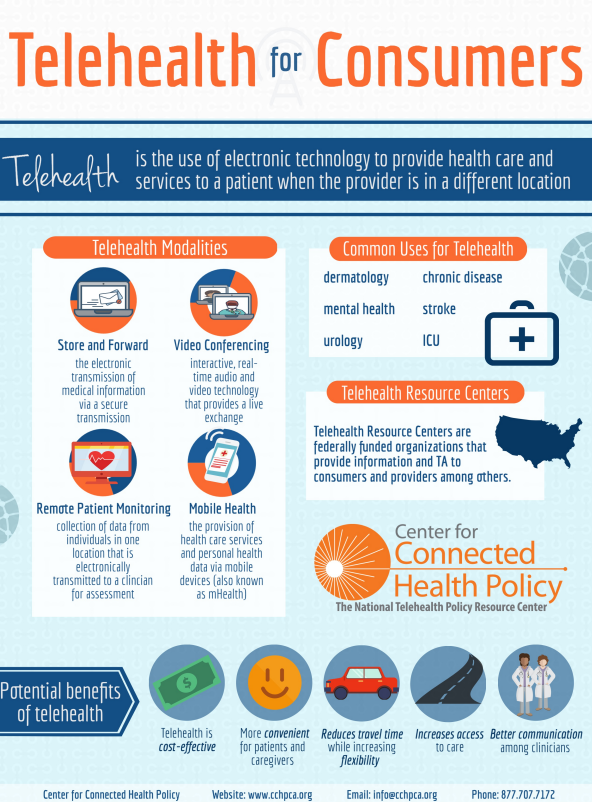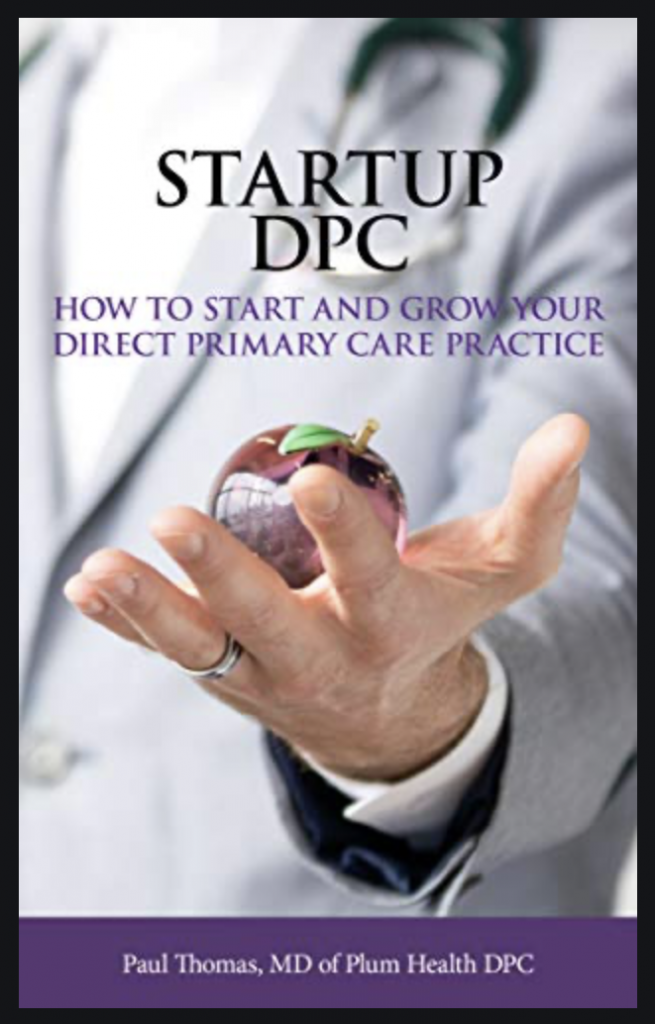Educating Patients and Doctors About DPC Through Social Media with Dr. Paul Thomas
Doctors love numbers.
And the team at Shankx Web Development loves results.
So let’s give you some context for our interview with Dr. Paul Thomas MD of Plum Health, a Direct Care Clinic in Detroit.
- More than 70% of adults across the United States search online first for health information. These search results influence their health beliefs, intentions, and health care decision-making.
- Studies cited in the National Center for Biotechnology Information found that 90% of physicians are already using social media in their professional lives, and 65% are using social networking (aka Web 2.0) to “improve or enhance professional networking and education, organizational promotion, patient care, patient education, and public health programs.”
- Increased accessibility and reach granted by technology like smartphones means that 49% of patients expect to hear from their physician within a few hours when requesting an appointment.
If you learned something from those eye-opening stats, join the club.
Since October was National Health Literacy Month, Dr. Thomas definitely enlightened us on the need to educate both doctors and patients about evolving models of health care access and delivery.
Catch the FULL interview right here. Just make sure you’re armed with a pen and notebook because this one is packed full of juicy nuggets.
As ever, we’re replaying the best highlights from our time with Dr. Thomas.
DPC is all about creating really strong connections with patients.
— Dr. Paul Thomas
On Educating Patient Communities in Detroit…
Patient communities in Detroit are unique, says Dr. Thomas. Many individuals are blue-collar workers whose jobs are unionized. Their health care options are tied to their employers — and there’s often a lack of knowledge about health care alternatives like Direct Primary Care.
To counteract this reality, Dr. Thomas uses well-timed appearances in local radio stations, regional and national television shows, and on various podcasts across the country to make sure he’s reaching as many people as possible.
But Dr. Thomas is also a huge advocate of the gumshoe technique — good, old-fashioned, person-to-person conversations. He relies on community centers, non-profits, and libraries as fantastic resources and spaces to connect patients with his expertise. It definitely takes time, research, and deliberate action to schedule and attend these events.
Worth it, says Dr. Thomas.
In the last two to three years, these techniques have managed to move the needle in the number of people awakening to the fact that there are options like Direct Primary Care open to them.

Many patients are so enamored with Direct Care that they’re willing to cross state lines to see their doctor, as evidenced by the existence of patients in states where no providers are registered.
— Nationwide Growth Trends, HubSpot, 2017
On Using Social Media As a Physician…
Dr. Thomas is pretty upfront about the power of social media in building both his practice — in terms of sheer numbers — as well as broader knowledge-sharing.
He comments that many doctors:
- See social media as a personal tool but not a professional one (and they’re particularly concerned about patient privacy issues or spreading unverified content online)
- See social media as a distraction (because they don’t understand when and how to use it)
Instead, he encourages physicians to begin to see social networking sites as a way to build relationships with their patients.
There doesn’t need to be any dispensing or sharing of personal advice or information. But if doctors can do an “Ask Me Anything” session every week or just answer “general” medical questions with their own experiences (and a nice, loud disclaimer), they can gain a significant following…
…to make an even bigger impact.
If you’ve ever visited Dr. Thomas’s Facebook page, you’ll know he posts about everything from taking his dog out for an afternoon stroll to virtual walks in the wood (aka exercise in the age of COVID) to the cost of bogus medical claims to patients.
Media has the power to amplify the message for medical professionals because they’re already trusted figures in a community.
His observations are quite valid — we’re living in the age of the “Expert.” Professionals across industries as diverse as media, pipe-fitting, poolscaping, and even hot-dog vendors, are harnessing the power of the “expert” to build an audience and monetize their professions.
Dr. Thomas wants to know: Why can’t that be any doctor? And the fact is that it can.
Read on to learn about Dr. Thomas’s resources for how, exactly, to harness online media in the service of skyrocketing a DPC practice.
On the True Power of Telemedicine…
We’re on the brink of a massive technology-driven shift, and COVID-19 simply sped up the sequence of events.
Whereas delivery methods for many services — from legal expertise to medical advice — saw “tele”-conferencing as a nice-to-have, the pandemic’s need for social distancing made these delivery methods a must-have.
It really cleared the fat from the water, so to speak, because it wasn’t just about dispensing potential advice anymore. People could just turn to a Google search for that.
Instead, telehealth — the use of virtual appointments and audio-visual technology to connect health care professionals and patients — went from novelty to necessity.
Telemedicine integrated platforms like text messaging, chatbots, online calendar bookings, and automated email confirmations reduce barriers to accessibility during the pandemic.

Dr. Thomas looks at telemedicine a little differently. For him, it’s always been about outreach and relationships. His patients are able to access him and expect a response to questions within the day. He can conduct casual conversation around potential symptoms through text or email. Patients compare it to “having a doctor in the family.”
What’s even more interesting is that Dr. Thomas uses telemedicine to facilitate in-person contact. He reserves three hours in his schedule every day he practices to treat same-day or urgent care appointments. Patients can book themselves in — and if they need, he can make at-home visits.
On Doctors Having a Plan to Build their Practice…
When Drake rapped, “0 to 100 real quick,” he clearly never heard about Dr. Thomas. From 0 patients in 2017 to over 500 in 2020 (and a second location opening in Farmington Hills), Dr. Thomas is uniquely qualified to feel every DPC physician’s concerns and growing pains when establishing a practice. And he’s equally as quick to point out the opportunities.
Starting a Direct Primary Care practice takes guts. And, it’s a difficult process to start a DPC Practice – kind of like climbing a mountain. It takes guts to get out of an employed, salaried position with nice benefits and launch yourself headfirst into a world of entrepreneurship and risk.
— Dr. Thomas, StartupDPC.com
His book, “Startup DPC: How to Start and Grow Your Direct Primary Care Practice,” takes medical professionals through a step-by-step walkthrough on how Docpreneurs can scale up their practice — or keep it as small and focused as they want.

And that’s the power of DPC. Not only do patients receive better quality of care, form a deeper relationship with their primary care physicians in a more affordable way, but it’s also up to doctors to decide how and what their practice is going to look like.
Instead of being burnt-out, disillusioned, and miserable, doctors get to decide if they want to be profitable seeing 10 patients a day or half that — and still grow.
On the True Meaning of Accessibility in Health Care
When you’re communicating on social media, you have to be relatable. You don’t need to be super charismatic or funny — you’re a medical professional, after all. But you do need to break down jargon in bite-sized, easy-to-understand information for your patients.
Dr. Thomas reflects that this is the true power of social media. We do focus a lot on improving health care accessibility to communities in terms of the number of hospitals, options for traveling to clinics, and the cost of health care treatment.
But maybe it starts with something a lot simpler: Communicating and learning for both doctors and patients.
